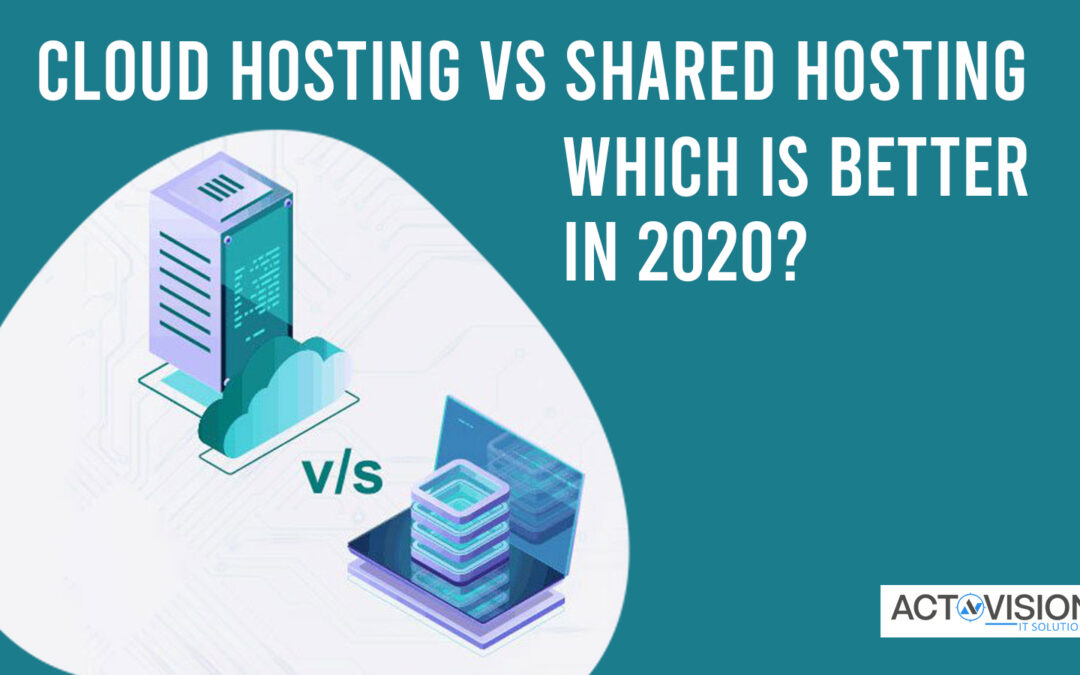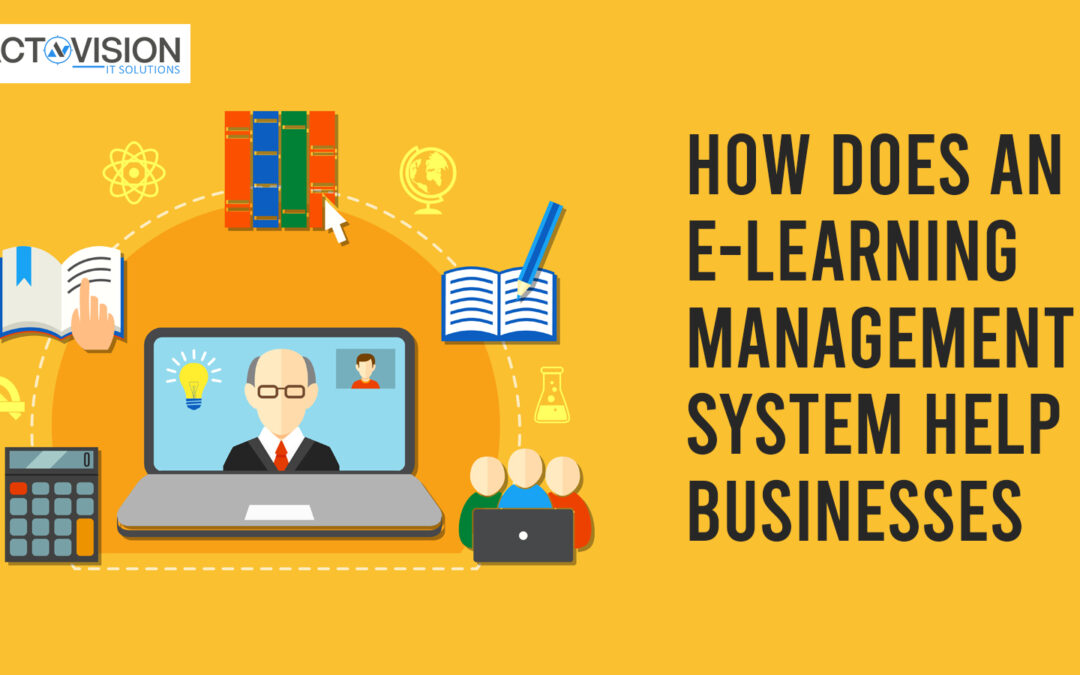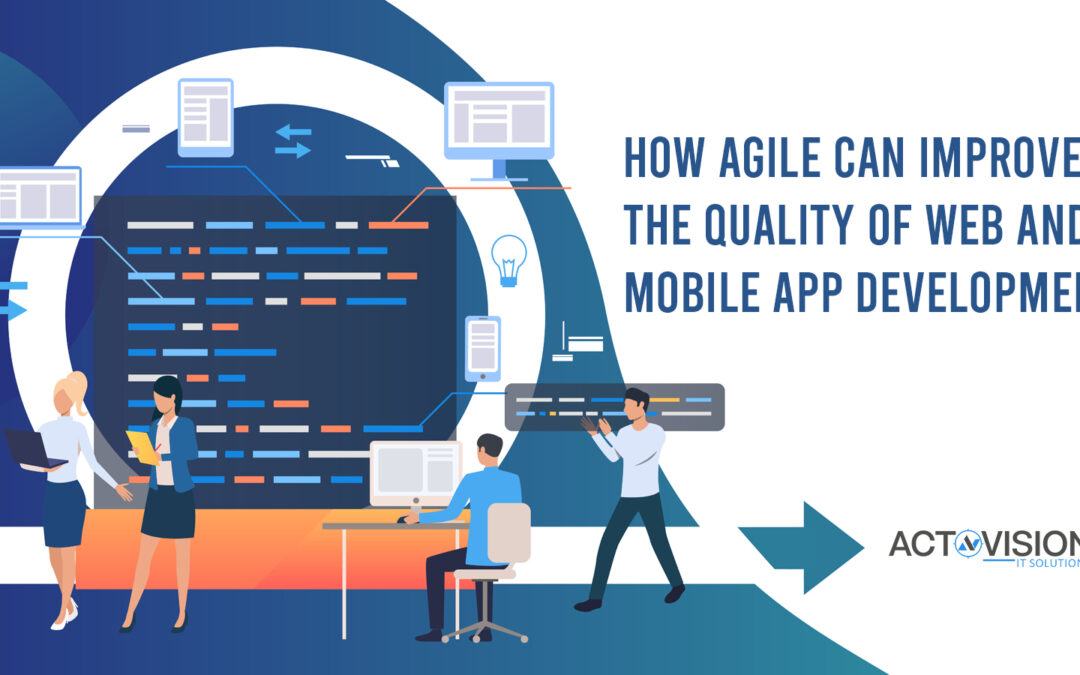
by actovision | Apr 3, 2020 | Uncategorized
Are you convinced that your life has become easier than before due to the increased usage of mobile apps? Well, you must accept that statement with a pinch of salt, for the growing use of such apps has been followed by higher incidences of data theft/breach as well. Surprised? Then hear what the experts have to say, for according to Gartner, around 75% of security breaches especially at the endpoints are due to the misconfiguration of mobile apps (Ref: https://www.gartner.com/newsroom/id/2753017.) Also, according to a report of BI Intelligence, the total revenue loss due to mobile fraud in 2016 was up to the tune of $350 million (Ref: http://bit.ly/2ct4luH).
Why mobile app frauds take place?
In recent years, the easy availability of low cost yet powerful smartphones has meant a greater number of people have access to them. This, for the customers, has created a greater appetite for apps that are aesthetically pleasing, seamless to navigate and have advanced features. As a result, business enterprises are under tremendous pressure to reach out to these customers on the go with new mobile apps by using technologies such as the Cloud, Internet of Things (IoT), Analytics or at a nascent level even Artificial Intelligence or AI.
This rush to come out with new mobile apps at the drop of a hat and to be a step ahead of the competition means stringent security checks are often overlooked. This is done in favor of considerations such as faster time to market and a higher ROI. Since, many of these apps hold sensitive customer information such as credit card details, the lowering of built-in security checks has given rise to higher incidences of security breaches. This has made the mobile application development companies incorporate stringent measures to outsmart the hackers and gain the trust of customers.
Methods used by cybercriminals to steal sensitive data
Social Engineering: Attacking mobile apps by exploiting their technical flaws through malware, viruses, worms, and trojans is a less trodden path by cybercriminals compared to the stealing of information by manipulating the psychological aspect of users through social engineering. In this, users are tricked into revealing their sensitive personal information through techniques such as Phishing, Wateringhole, etc.
Spyware: This technique is used more at the enterprise level where tricksters infect business apps used by employees with malicious spyware to steal sensitive business and personal information. Some of the examples are CoolWebSearch, Gator, 180searchAssistant etc.
Mobile Botnet: If your mobile is not protected by an antivirus, it can be infected with a mobile bot or malware targetting your smartphone. The compromised smartphone will then be connected to the servers controlled by the botmaster or a cybercriminal(s) siphoning off personal information and even money. For example, a mobile botnet called HummingBad (now back as HummingWhale) had infected over 10 million Android smartphones in 2016 resulting in a profit of over $300,000 a month for its makers (Ref: http://bit.ly/2nTSBo3).
Consequences of a security breach
Hacking into mobile applications is carried out with an alarming regularity but enterprises are able to discover it quite late when the damage has already been done. There can be serious consequences of compromising with mobile app security as listed below.
Loss of revenue: At an individual level, a compromised mobile app (banking, e-commerce, utilities etc) can result in money being siphoned off from bank accounts or digital wallets. However, at the business level, the loss of revenue can happen when
- Sensitive business information gets stolen through spyware or mobile botnets.
- Customers discard the mobile app and opt for the rival one after coming to know the mobile app is not secured.
Brand value hit: If customers are in the know of a mobile app being compromised in terms of security, then the brand value of the enterprise or the mobile app development company behind the app takes a hit.
Face lawsuits: Customers or business entities can file lawsuits against the mobile app development agency or the company running the app for compensation.

by actovision | Mar 24, 2020 | Uncategorized
Appealing, user-friendly and super fast websites are not just created out of thin air, for web hosting solutions have a great role to play in delivering the final results! Whether it is a comprehensive e-commerce website or a simple blog-based site, the web hosting services do the heavy lifting of tasks at the backend. Primarily, a website is a bunch of HTML files, whereas website hosting refers to the process of how and where those files are stored. Web hosting is as important as web development services, for it can enhance the scalability and user experience of a website. The security, speed, uptime, and performance of the website certainly depend on the robustness of the web hosting services.
Types of web hosting
Web hosting is a complex process comprising two types: Shared hosting and cloud hosting. When multiple websites are stored in a single server wherein they share several resources such as bandwidth, disk space, etc., it is known as shared hosting. On the other hand, cloud hosting involves the storage of multiple websites across multiple servers. It offers exclusive features like reliability, increased speed of accessing resources, faster bandwidths, high uptimes, and security when compared to shared hosting.
Cloud Hosting vs Shared Hosting – which one is the winner?
Availability of website based on high uptime
A blank screen instead of the website on display is the last thing you would want your visitors to see when they search for your brand, products or services. To pre-empt such a scenario, you should focus on implementing the best web hosting solution for your website. Although both hosting services – shared and cloud, have their respective pros and cons, their utility can be best understood during server outages. For example, the shared hosting services can let the computer screens to go blank during server outages.
However, for cloud hosting services, since the applications and databases are stored in multiple servers, there is no downtime or blank screen should any of the servers go down. For shared hosting, it is difficult to prevent downtime challenges in their entirety save minimizing them with the help of CDN – Content Delivery Network comprising distributed servers offering web content based on the user’s geographical location. In the overall analysis, shared hosting may not ensure the availability of your website at all times based on the physical environment of the server when compared to cloud hosting.
Scalability to avoid redundant usage and investment
In the case of shared hosting, customers need to pay a fixed amount to hire a bundle of space, which they may not always require. However, the cloud hosting solution offered by any best web development company provides the much-needed flexibility through the allocation of virtual space. Here, you get to pay on the basis of what you use. Sounds feasible, right? Apart from that, cloud hosting also helps you to manage any sudden website traffic surge instantly, which ishttps://www.webguru-india.com/website-development-company not possible in a shared hosting solution. So, sharing does not always amount to caring! For you need to select the hosting services wisely to achieve ROI.
Speed of the website
The servers used in shared hosting are always filled to capacity. Thus, should one of the websites receives an unexpected surge in traffic, all other websites stored there face a negative fallout in the form of increased load times. On the other hand, cloud servers ensure a robust performance for your website by balancing it among multiple server environments. Moreover, the superior server hardware, low density and several caching layers of cloud hosting drive the loading speed of the websites.
Here, the winner turns out to be cloud hosting! For it gives you access to more resources besides letting your website to run at excellent speeds.
Security
Websites get compromised all the time even when we think they do not contain anything worthwhile to hack! In shared hosting, if one is able to access a server it becomes easy to gain access to other websites as well. However, cloud hosting services offer different types of controls that are corrective, preventive, detective and deterrent in nature to combat any security issues such as illegal invasion and network eavesdropping. This again proves that cloud hosting has an edge over shared hosting.

by actovision | Mar 20, 2020 | Uncategorized
Is your business struggling to meet its objectives and project deadlines? Is the quality of your products or services not meeting the prescribed standard? Chances are your workforce may need to be retrained to fully understand and execute the various processes of your operational workflow. It is possible that a lack of quality training has left the workforce bereft of ideas or skills to address the challenges they come across. In today’s competitive business landscape where high attrition rates have become the norm, it is important for businesses to invest in quality training using an eLearning management system. In fact, statistics also point to the growing importance of eLearning. According to Research and Markets, the global eLearning market is expected to touch $325 billion by 2025.
Although classroom training might appear convenient, the outcomes are not always viable. In an organization comprising various departments or processes located at different places, centralized classroom training is not feasible. Since each process shall have its special training needs, one-size-fits-all classroom training can easily be replaced by a customized eLearning solution.
Issues with classroom training
- Notwithstanding the face to face interaction between the trainees and trainer brought about in-classroom training, it is not always feasible due to the nature of some businesses.
- In a fast-paced business environment, namely, retail or hospitality where employees have to be always on their toes and continuously engage with their end customers, taking time out for classroom training can be a difficult proposition. Rather they would need short term training courses in an easy to understand format, which can be accessed in their chosen time.
- In organizations where departments or teams are spread across geographic locations with their specific work timelines, arranging classroom training at a common location is just impossible. This is where a comprehensive eLearning solution can be of help, for trainees can access it at different times, locations, and by using the device of their choice.
Benefits of an Elearning management system
With digital transformation gaining pace, businesses need to adopt the latest technologies and streamline their process workflows. And the evolving nature of technologies requires the workforce to be up-skilled continuously. The challenge is not only to understand the new technological paradigms but to adapt to the new methodologies brought about by their implementation as well.
Value addition: As the workforce gets trained using eLearning software at its chosen time and pace, the business gains a competitive advantage. Training can lead to positive outcomes such as reduced operating expenses, streamlined workflows, reduced redundancies, optimized resources, and value addition.
Quick time to market: To beat the competition, you must bring out your products or services on time. This can only happen when your workforce knows about the latest technologies, market dynamics, business processes, and objectives. A well-trained team can deliver better performance by using optimum resources. Since the workforce is likely to work in tandem across departments and locations, the product development process shall get streamlined thereby making the time to market more focused and predictable.
Cost-saving: Classroom training would need additional expenses towards setting up the infrastructure, printing training materials, and travel and accommodation (if trainees come from other centers that are geographically distant.) On the other hand, an eLearning software containing the training modules can be accessed by employees across geographies, processes, teams, and time zones.
Webinars: An important part of classroom teaching is the face-to-face interaction that trainees have with their trainer(s). In eLearning, this can be easily achieved by conducting webinars. This will help trainees to achieve a faster learning curve and enable them to apply their skills to the jobs.
Better Tracking: Similar to classroom training, an eLearning management system allows the trainers or business stakeholders to keep track of the learning curve of each trainee. This helps them to focus on the laggards and bring them up the learning curve fast.
Better learning engagement: Prolonged sessions of classroom teaching can lead to a drop in the attention span of trainees. This drop can impact the learning outcomes in due course. On the other hand, since eLearning courses are accessed by the trainees at their chosen time, they can regulate their learning hours as well. This leads to better learning engagement.

by actovision | Mar 9, 2020 | Uncategorized
According to a report, internet users spent a daily average time of 144 minutes on social media networking in 2019, which is, of course, greater than the time spent on social media in the preceding years (Source: statista.com). This trend tells us that social media is here to make waves thereby impacting people and their browsing habits like never before. As social media usage is expected to increase, you have to strategize a marketing campaign that aligns with this trend to produce effective results for your business. However, given the vast area of social media, companies are often afraid to tread these areas of marketing. Do you get overwhelmed when it comes to using social media tools? Do you not know how to get started? Hire an agency that incorporates the latest trends in their social media marketing services. Since consumer behavior is extremely dynamic, following the current marketing trends will keep your business highly relevant and visible across social media channels.
Want to make the most of social media trends of 2020? Find them here.
1. Use influencer marketing as an audience-building strategy – Social media influencers are all over the place. As they connect with audiences on a personal level, their appeal can have a huge impact on the consumers’ purchase decisions. So, getting such influencers endorse your products or services is a surefire way of expanding your customer reach on social media channels. Calvin Young, a differently-abled traveler/blogger promoting Busbud, a travel company, is an example of influencer marketing. Planning along these lines can help you win more customers and earn more revenue.
2. Live stream for real-time communication – Videos and podcasts are effective in attracting more customers, but live streaming is going to take center-stage in customer engagement this year. As per a survey, over 80% of consumers would prefer watching live streams than reading written content posted by business brands on social media platforms (Source: brandongaille.com). Should your business miss out on this golden opportunity of interacting with the customers? So, strategize accordingly!
3. Humanize your brand and connect better – Ditch that grim and professional tone of communication. An informal way of talking and expressing human-like emotions help you interact with the customers in a better way! Want a hit example to follow? Netflix’s brand humanizing game is on spot! With tongue-in-cheek and humorous comments, the brand has rightly earned an increasing number of customers. However, you may have to engage the right digital marketing services to make your brand more relatable and approachable to the audiences out there.
4. Security is more important today than ever before – Security issues are often regarded as the bane of the digital revolution. And Facebook’s latest data breach mishap has once again underlined the growing menace of hacking on social media (Source: selfkey.org). Notwithstanding the odds, we should be on the lookout for solutions. So, to keep your business account and customer information safe, set strong passwords, keep your apps updated, use encryption, and install antivirus. Remember, complying with the security features will present your business brand as a credible one before the customers.

by actovision | Mar 6, 2020 | Uncategorized
The process of developing a well designed, user-centric and intuitive application can be a grueling and complex one. Whether the app is being created for the web or targeted towards mobile platforms, the fact remains that to develop a successful app just the technological know-how is not enough: you need to have a fool-proof development methodology in place that allows for interaction among the clients and developers, helps in the incremental development of the application, and is spread across all stages of the app’s progress.
Agile is just such an approach to application development. Involving continuous, the iterative collaboration between specialized teams and the end-users across all levels of app development, Agile has gained immense popularity among website development services as well as mobile app development services. As of 2018, 91% of software development organizations are using Agile as the predominant methodology (source: statista.com).
In this post, we are going to discuss exactly how Agile can improve the quality of web and mobile app development. But first, let us discuss a bit about what Agile actually is.
What is Agile?
Agile is a software development methodology which involves an iterative and incremental approach to the development process. Using Agile, the entire project, be it a web or mobile app, is broken down into a number of sub-projects or modules. Each module is then developed independently by separate cross-functional teams that work in close collaboration with each other as well as the clients. The project is developed and integrated over several iterations or “sprints”, which incorporates all aspects of the app development process, starting from design to development, testing, release, and feedback. Due to the immense benefits provided by Agile, every top web development company, as well as mobile app development services, is moving towards this style of development.
Now that we have an idea of what Agile is, let’s see how Agile can improve the quality of web and mobile app development.
Rapid Application Development
One of the most obvious ways in which Agile boosts the quality of app development is that it allows for speedy execution of ideas into reality. In the Agile process, the entire application is distributed into independent modules that are developed simultaneously by separate teams that work in close collaboration with each other. This allows for rapid development and testing of the apps at each level of creation, which ultimately translates into a better quality product.
Enhanced Stakeholder Collaboration
The Agile process emphasizes on continuous collaboration between all the participating stakeholders. This allows the development team to be in close communication with the clients, thus helping them to have a better idea about the clients’ requirements. Also, fully functional modules are presented to the clients after each sprint, and any feedback is quickly incorporated into the next sprint. The outcome of this iterative process is quality software, which is the main reason website development services have adopted this method.
Improved Features and Customizations
The sprint-based development method, along with continuous client communication allows new features and improved customizations to be included at all levels of the development process. Also, any changes required by the customer can be easily integrated during successive sprints. This helps to make the application more robust, feature-rich and meets the clients’ requirements.
Ensures Cost Effectiveness and Productivity
As the Agile process is incremental by nature, project schedules are fixed. This helps website and mobile app development services to deliver on-time and on-budget products. It is common knowledge that in the tech industry, the timely release is essential to the cost-effectiveness and success of any application; this is exactly where the Agile process assists by ensuring reduced costs of app creation and properly scheduled release. Ultimately this translates into a quick return on investments and reduced market risks. From a Project Management perspective, Agile is the perfect way to create applications.
Customer-Centric App Development
As aforementioned, the Agile process places great emphasis on integrating customer feedback and suggestions into the different stages of application development. This makes for a more customer-centric app development, the end result being a feature-rich, quality application that exactly suits the customers’ requirements.
The web and mobile app ecosystem is a complex space where change is the only constant. The Agile methodology helps to navigate this region by providing a sound and robust system based on which apps can be developed. Incorporating improved design and testing methods, better stakeholder communication, rapid development, and cost-effectiveness helps to deliver high-quality end-products. If you want your app to be built using Agile, contact a top website development company today.

by actovision | Mar 4, 2020 | Uncategorized
The popularity of mobile apps has truly brought the benefits of the digital revolution to everyone. If figures are to be believed then mobile apps are going to touch an expected revenue of $188.9 billion globally in 2020. The appetite of users for such apps across industry verticals has made the job of developers a challenging one. This is due to the fact that developers of any mobile app development agency have to come up with attractive designs, seamless navigation, and robust security features to make the app trendy and acceptable to the target audience. Lately, the focus is on using Agile to improve the quality of mobile app development. One of the factors determining the smooth functioning of a mobile app is its quality of connection to the server. This is where the APIs come into play. Let us understand what APIs are all about.
API and its benefits
An API or Application Programming Interface is a communication protocol that allows an application to access the data, features, service, or operating system. It is also a tool used by developers to create a mobile application and deliver functions quickly. For example, it is the API that detects an interaction when you touch the screen of your smartphone. In other words, an API lets two distinct web services on the internet to communicate and exchange information with each other. As an intermediary between two services, the API comes in four major forms viz., Open APIs, Partner APIs, Internal APIs, and Composite APIs.
We all use APIs in one form or the other. For example, while clicking pictures on a smartphone, we use the camera’s API. Also, when an app asks for your location, it uses the geolocation API in your browser. Importantly, APIs can control access to your system’s software or hardware and has a role in offering security as well.
Since APIs practically control the functioning of an application, it should be robust (and lightweight) enough to make the exchange of information, seamless, streamlined, secure, and fast. In other words, developers at any app development agency in India or elsewhere ought to use an API that fulfills the above-mentioned criteria. This is where a RESTful API comes into the picture.
What is a RESTful API?
It is a set of functions that developers use to send requests or receive responses through an HTTP protocol. Based on the Representational State Transfer (REST) protocol, RESTful APIs offer seamless interoperability among computer systems on the World Wide Web. A RESTful API uses the HTTP protocol to create, update, or delete data. It enables an application to be easily modified and become scalable.
How RESTful API for a mobile app is different?
- Since mobile app users can be very demanding, developers should use RESTful APIs to avoid server issues. In other words, the API ensures users do little while the servers do the most.
- For mobile apps, the RESTful APIs use the HTTPS protocol, which is more secure for using a Secure Socket Layer (SSL).
- Since mobile apps undergo a lot of updates they should have a robust process for version control to manage the changes better.
- The APIs for mobile apps should ensure all functionalities accessed by the user, while being offline, to be reconciled when going online.
How RESTful APIs function?
A sequence of information to be exchanged on the network is broken down into a series of modules giving developers a lot of flexibility. The RESTful APIs take advantage of HTML as laid down by the RFC 2616 protocol. They use PUT to update or change the status of a resource, POST to create and GET to retrieve the resource.
Thus, RESTful APIs will turn your mobile app simple, portable, scalable, reliable, and modifiable. As a company offering mobile app development services in India, you can get APIs from third parties or leverage the ones offered by Facebook, LinkedIn, Google, or Amazon. However, should you want to build an API in-house there can be speed bumps? So, it is advisable to follow the best practices, be it in designing, developing, testing, or managing.
Building a RESTful API for a mobile app
The tips to build a RESTful API for a mobile app include aspects such as choosing a database, ensuring security, hosting the server, building a back-end architecture, complying with various protocols, and supporting multiple platforms.
Server hosting: Choosing the right server is of prime concern as ultimately the app will fetch information from there. You can choose from plenty of cloud-based servers to get performance and scalability. The factors you ought to keep in mind while evaluating the efficacy of a server include
- How the server scales its resources – horizontally by adding more systems or vertically by upgrading the resources of existing systems.
- The increase in cost with usage
- Can the migration features in the server (if present) allow the app to run on multiple environments?
- Are there built-in features in the server to save time and effort in creating an API?
- How does the server protect your app – using uptime monitoring, encryption, or by taking automated backups?
- Is there any easy way to port the data to another platform or service?
Data protection: The hosting service chosen by you should allow easy integration of CA certificates and HTTPS. It is better to use OAuth2 instead of the HTTP basic authentication measure as the former is more secure. In doing so, you can use a number of libraries for phone number authentication or social log-ins. These libraries have been vetted and validated by experts on the server and client-side. The norm should be to protect every API endpoint required for authentication instead of allowing free passes for a resource.
Protect any sensitive data through encryption and do not store your passwords in a text format. Improve the security of your passwords using hash or random salts.
Architecture planning: Use a common architecture so that developers can have more familiarity and things can run smoothly. A foreign architecture can make your developers difficult to grasp its finer points. As a developer, you may follow architectural styles such as hypermedia, pragmatic REST, and event-driven. Among these, hypermedia is for web applications and is easy to scale. Event-driven architecture can provide the option of having low overheads. For example, video chat applications, instant messages, and games for multiple players. Pragmatic REST can be used for both mobile and web applications.
Planning for database and storage: Remember that entity IDs have UUIDs that are randomly generated instead of being sequential. This is essential to secure resources by making the IDs harder to guess. Use a traditional relational database like MariaDB or MySQL or the scalability of a NoSQL database like MongoDB. Better, use a hybrid approach of PostgreSQL and it likes to get support for document storage.
Multiple platforms: Ensure the client is as thin or dumb as possible and keep all heavy-duty activities like sorting, number crunching, filtering, and data aggregating for the server. This will simplify the client’s logic and fetch the data as quickly as possible. This will come in handy while building apps for Android, iOS, or web platforms, for you can avoid rewriting the parsing logic or filtering. To fetch a long list of data use pagination to reduce the load on both the user and the client. Capture the OS versions, device names, and request headers to enable debugging and reading logs in the future.






